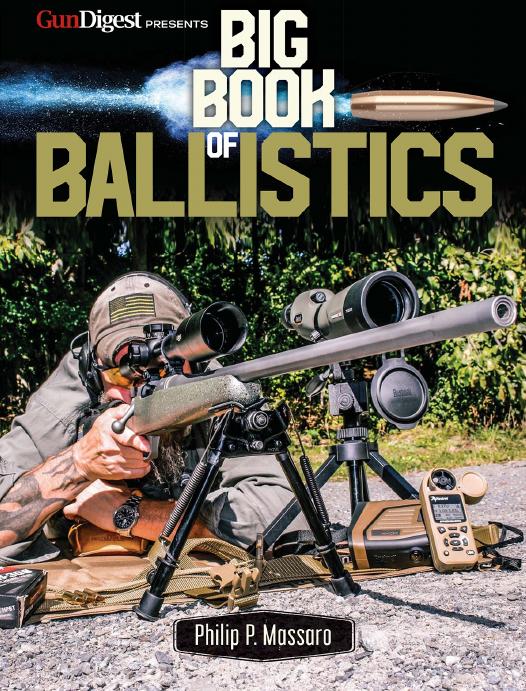Big Book of Ballistics by Philip Massaro

Author:Philip Massaro
Language: eng
Format: epub, azw3, mobi, pdf
Publisher: Lightning Source Inc.
Semi-jacketed .44 Remington Magnums.
Cape buffalo require a stout bullet, and proper shot placement.
Jack O’Connor was a fantastic author, known for championing the .270 Winchester, and was a proponent of the lighter calibers using bullets at higher velocities. Elmer Keith, an Idaho rancher with an extensive background in firearms, was responsible for the development of several highly popular handgun cartridges, as well as participating in the development of rifle cartridges that went on to influence future developments. These two gentlemen were both very well respected, yet had diametrically opposed views on what made a suitable hunting cartridge for various species. Keith believed in much heavier bullets than did O’Connor. But I firmly believe that their respective points of view were inarguably based on the terminal performance of the projectiles from their era much more than the potential of the cartridges by which they so strongly swore.
Walter Dalrymple Maitland Bell, a Scotsman whose adventures in early 20th century Africa are heralded to this day, was a proponent of the use of small-bore rifles (the 7x57mm Mauser being the most used) for big game, especially on the 1,000+ elephants he took in his hunting career. Bell, who was an excellent shot, especially under the pressure of being in close proximity of truly dangerous game, made the claim that his “barrel had never been polluted by a soft-point bullet.” He came to rely solely on full metal jacketed bullets, which had the nose portion strengthened by steel, placed under the layer of copper gilding metal. While I don’t think that any Professional Hunter alive today would recommend or even accept the 7x57mm Mauser as an appropriate dangerous game cartridge, Bell was not a ‘hunting client’ in today’s sense. He had no legal requirements regarding rifle caliber, and was literally in uncharted waters with respect to ballistic boundaries. Bell found that 173 grains of bullet properly placed would work just as effectively as 500 grains. If either bullet were placed incorrectly, Bell contended, they were equally ineffective. We can agree that a cartridge as small as the 7mm Mauser is not the best choice for dangerous game, but Bell’s point was that a bullet, if properly constructed, could amaze a hunter as to its actual capabilities. In a very short period of time, the four-bore lead cannonball weighing in at 1⁄4 pound had effectively been matched with a 173-grain steel and copper jacketed 7mm slug. The terminal ballistics experimentation of Bell (who also used a 6.5x54mm Mannlicher-Schoenaur and a .318 Westley Richards) gave quite a bit of insight into the importance of bullet construction and its correlation to terminal ballistics.
All of these hunters had an irrefutable effect on the reputations of our favorite cartridges, on both ends of the spectrum. And many of those endorsements, based on the projectiles available to them at the time, carry on to this day. Today, however, some of these viewpoints need to be revised.
The cup-and-core bullets of the first half of the 20th century were tweaked in many different ways to achieve the consummate blend of expansion and penetration.
Download
Big Book of Ballistics by Philip Massaro.azw3
Big Book of Ballistics by Philip Massaro.mobi
Big Book of Ballistics by Philip Massaro.pdf
This site does not store any files on its server. We only index and link to content provided by other sites. Please contact the content providers to delete copyright contents if any and email us, we'll remove relevant links or contents immediately.
Backpacker the Complete Guide to Backpacking by Backpacker Magazine(2193)
Capital in the Twenty-First Century by Thomas Piketty(1949)
The Isle of Mull by Terry Marsh(1899)
Predation ID Manual by Kurt Alt(1658)
The Collected Non-Fiction by George Orwell(1574)
Small-Bore Rifles by C. Rodney James(1505)
All Fishermen Are Liars by John Gierach(1447)
Backcountry Bear Basics by Dave Smith(1434)
Creative Confidence by Tom Kelley(1417)
The Art of Throwing by Amante P. Marinas Sr(1355)
50 Famous Firearms You've Got to Own by Rick Hacker(1341)
Blood Mountain by J.T. Warren(1304)
Archery: The Art of Repetition by Simon Needham(1303)
Long Distance Walking in Britain by Damian Hall(1280)
The Scouting Guide to Survival by The Boy Scouts of America(1251)
Backpacker Long Trails by Backpacker Magazine(1248)
The Fair Chase by Philip Dray(1226)
The Real Wolf by Ted B. Lyon & Will N. Graves(1212)
The Ultimate Guide to Home Butchering by Monte Burch(1205)
